
Katima Mulilo: The Gateway to Namibia's Wild East
Explore Katima Mulilo: A tranquil town on the Zambezi River offering wildlife safaris, cultural experiences, and cross-border adventures in northeastern Namibia.
Katima Mulilo, a picturesque town nestled on the banks of the Zambezi River, is a hidden gem in northeastern Namibia. Known for its stunning natural beauty and vibrant local culture, this city offers a unique blend of adventure and relaxation for travelers seeking an off-the-beaten-path experience. The town is a haven for nature lovers and wildlife enthusiasts. With easy access to the Bwabwata National Park and the Mudumu National Park, visitors can embark on thrilling safaris to witness elephants, hippos, and a variety of bird species in their natural habitats. The Zambezi River itself is a major attraction, offering opportunities for fishing, boating, and breathtaking sunset cruises. Katima Mulilo is also rich in cultural experiences. The locals, predominantly the Lozi people, are known for their warm hospitality and vibrant traditions. Exploring the local markets and interacting with the community provides an authentic glimpse into Namibian life. The town's strategic location near the borders of Zambia, Botswana, and Zimbabwe makes it an ideal base for cross-border excursions, adding an extra layer of adventure to your visit.
Local tips in Katima Mulilo
- Best time to visit is during the dry season (May to October) for optimal wildlife viewing.
- Bring binoculars for bird watching; the area is home to over 450 bird species.
- Local markets are great for buying handcrafted souvenirs and experiencing local cuisine.
- Consider renting a 4x4 vehicle for easier access to surrounding national parks.
- Carry some cash, as ATMs can be sparse in remote areas.
Katima Mulilo: The Gateway to Namibia's Wild East
Katima Mulilo, a picturesque town nestled on the banks of the Zambezi River, is a hidden gem in northeastern Namibia. Known for its stunning natural beauty and vibrant local culture, this city offers a unique blend of adventure and relaxation for travelers seeking an off-the-beaten-path experience. The town is a haven for nature lovers and wildlife enthusiasts. With easy access to the Bwabwata National Park and the Mudumu National Park, visitors can embark on thrilling safaris to witness elephants, hippos, and a variety of bird species in their natural habitats. The Zambezi River itself is a major attraction, offering opportunities for fishing, boating, and breathtaking sunset cruises. Katima Mulilo is also rich in cultural experiences. The locals, predominantly the Lozi people, are known for their warm hospitality and vibrant traditions. Exploring the local markets and interacting with the community provides an authentic glimpse into Namibian life. The town's strategic location near the borders of Zambia, Botswana, and Zimbabwe makes it an ideal base for cross-border excursions, adding an extra layer of adventure to your visit.
When is the best time to go to Katima Mulilo?
Iconic landmarks you can’t miss
Shoprite Katima Mulilo
Discover the vibrant offerings of Shoprite Katima Mulilo, where convenience meets local flavor in a bustling supermarket experience.
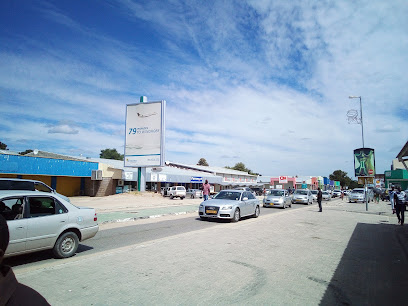
Passione Restaurant
Discover the culinary treasures of Katima Mulilo at Passione Restaurant, where vibrant flavors and a warm ambiance await every visitor.
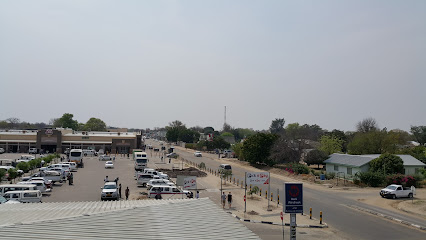
Protea Hotel Zambezi River Lodge
Discover the serenity of Protea Hotel Zambezi River Lodge, where luxury meets nature along the stunning banks of the Zambezi River in Namibia.
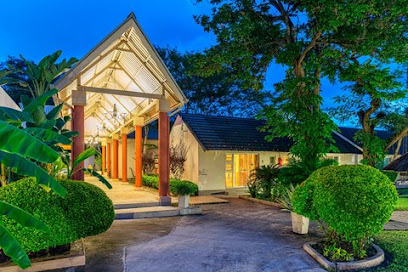
TotalEnergies Kamunu Service Station
Discover the convenience of TotalEnergies Kamunu Service Station in Katima Mulilo, where fueling up meets comfort and essential travel services.
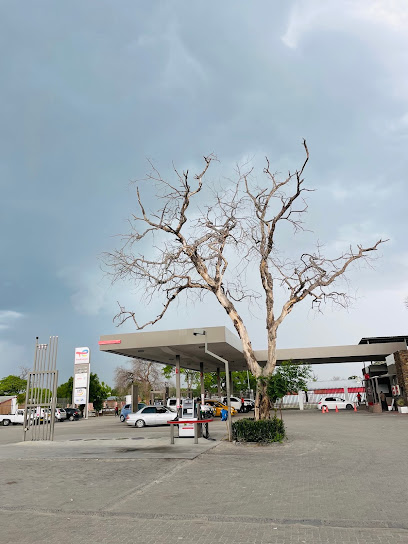
Caprivi Houseboat Safari Lodge
Discover the tranquil beauty and wildlife adventures at Caprivi Houseboat Safari Lodge in Namibia's stunning Caprivi Strip.
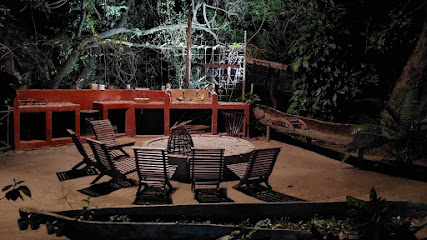
Geoline B&B
Experience warmth and comfort at Geoline B&B, your perfect retreat in the heart of Katima Mulilo, Namibia's vibrant gateway to adventure.

Katima Mulilo Town Council Guest House
Experience the heart of Namibia at Katima Mulilo Town Council Guest House, your comfortable base for cultural and natural exploration.
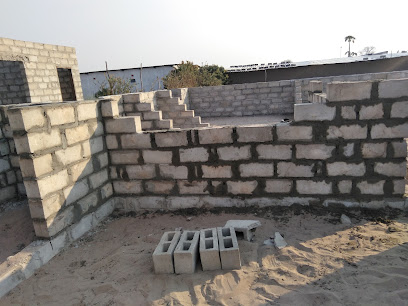
3 Palms B&B
Experience the comforts of home at 3 Palms B&B in Katima Mulilo, where local culture meets cozy accommodations in the heart of the Zambezi region.
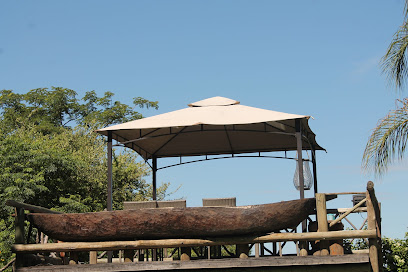
Kololo Guesthouse
Experience the charm of Kololo Guesthouse in Katima Mulilo, a serene retreat for travelers exploring the Zambezi Region of Namibia.

Creations Bar
Experience the vibrant nightlife of Katima Mulilo at Creations Bar, where delicious drinks and a lively atmosphere await every night.

Caprivi Adventures
Explore Namibia's breathtaking landscapes and wildlife with Caprivi Adventures, your premier tour operator for unforgettable experiences.
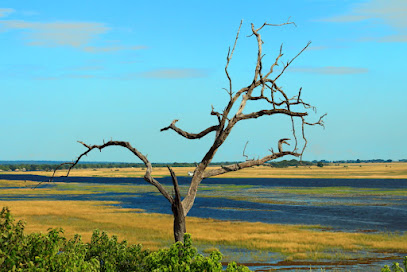
Chotto Market
Experience local culture and style at Chotto Market, a lively barber shop in Katima Mulilo that combines grooming with community spirit.
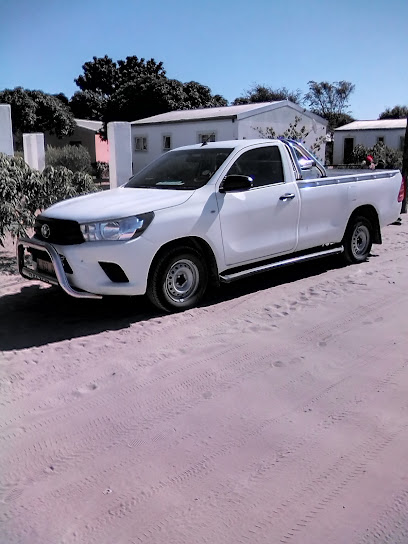
Ngweze South S.D.A Church
Discover the spiritual heart of Katima Mulilo at Ngweze South S.D.A Church, a welcoming haven for worship and cultural exploration.
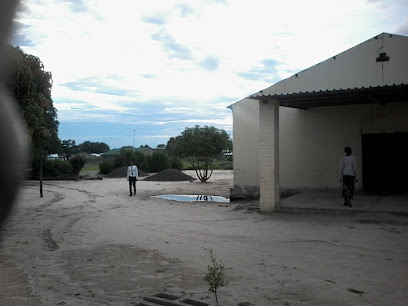
Namwi Island Lodge
Experience the tranquility of Namwi Island Lodge, a perfect blend of comfort and adventure on the banks of the Zambezi River in Namibia.
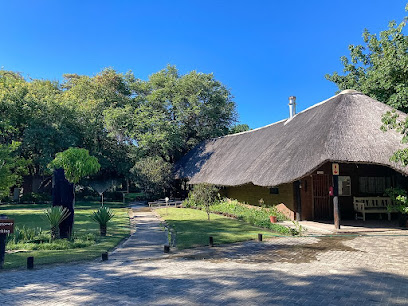
Mukwahepo Lounge
Experience the vibrant nightlife of Katima Mulilo at Mukwahepo Lounge, where local flavors and a lively atmosphere await you.
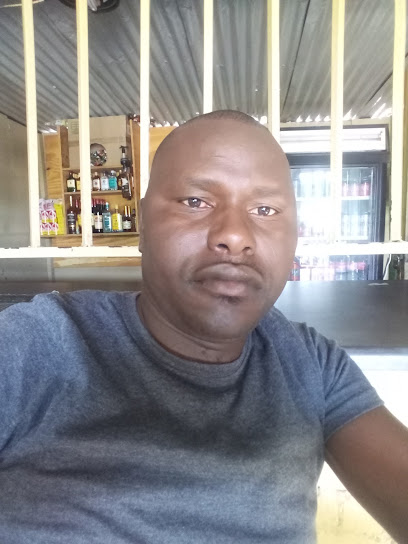
Unmissable attractions to see
Mudumu National Park
Explore the breathtaking Mudumu National Park in Namibia, a wildlife haven filled with diverse landscapes and rich biodiversity for nature lovers.
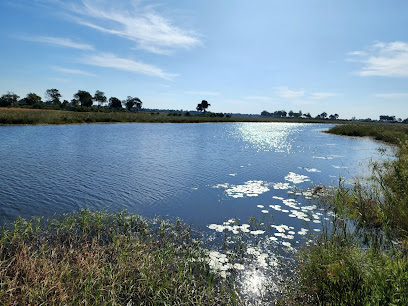
NAMWI ISLAND CAMPSITE & SELF-CATERING
Discover the beauty of Namwi Island Campsite, a serene retreat for nature lovers and adventurers along the Zambezi River in Namibia.
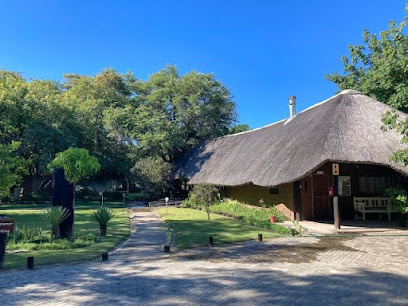
Alfred Chikusi Memorial Park
Experience the tranquility of Alfred Chikusi Memorial Park, a green haven in Katima Mulilo that captures the essence of nature and local culture.
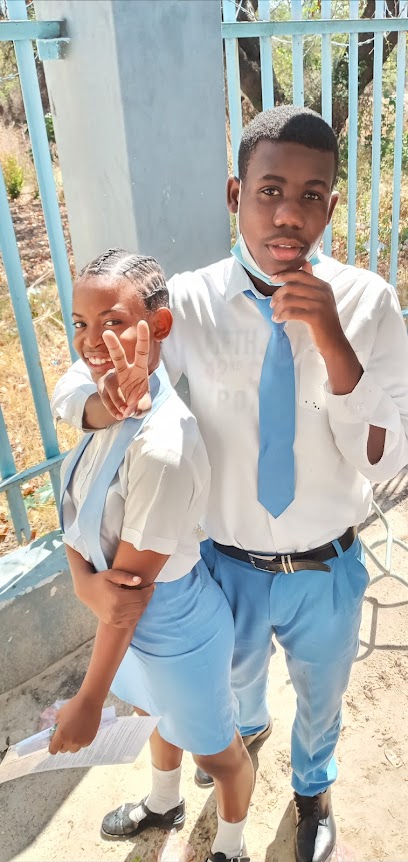
Katima Mulilo Bridge
Experience the breathtaking views and cultural richness at the iconic Katima Mulilo Bridge, connecting Zambia and Namibia over the Zambezi River.
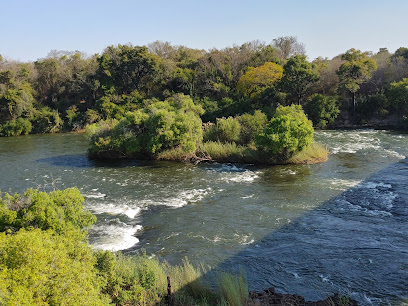
St. Joseph Catholic Church
Discover the spiritual heart of Katima Mulilo at St. Joseph Catholic Church, a beautiful blend of faith, culture, and community.

Caprivi Art Centre
Explore the Caprivi Art Centre in Katima Mulilo, a vibrant museum showcasing the rich artistry and cultural heritage of Namibia's Caprivi region.
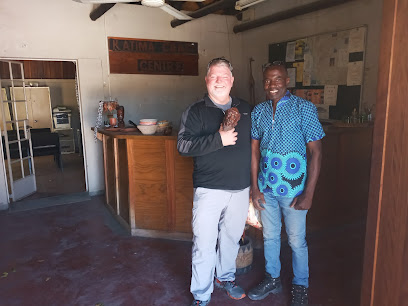
Zambezi Sun Hotel cc
Discover the Zambezi Sun Hotel, your gateway to exploring Namibia's breathtaking landscapes and vibrant wildlife along the Zambezi River.

ZAMBEZI WATERFRONT
Explore the tranquility of Zambezi Waterfront, a peaceful park alongside the Zambezi River, perfect for nature lovers and families alike.

Kasaha(Kabbe)
Explore the stunning landscapes and rich culture of Kasaha (Kabbe), a must-visit tourist attraction in Luile, Namibia.

Omdurman
Explore Omdurman - A vibrant cultural hub in Sudan, filled with rich traditions, lively markets, and stunning architecture.

M-West Caw Wash and Recreation park
Discover tranquility and nature at M-West Caw Wash and Recreation Park in Katima Mulilo, Namibia, perfect for nature lovers and relaxation seekers.

Silumbu Eco-Lodge and Camp
Experience the beauty of Zambia at Silumbu Eco-Lodge and Camp, where nature and sustainability come together in a unique tourist attraction.

Essential places to dine
Passione Restaurant
Experience the rich flavors of Namibia at Passione Restaurant in Katima Mulilo – where every meal tells a story.
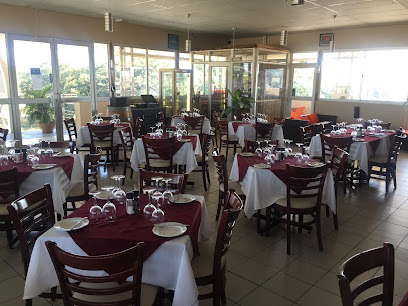
KFC Katima Mulilo
Discover KFC Katima Mulilo: where delicious fast food meets Namibian hospitality in the heart of Katima Mulilo.

K & N RESTAURANT
Experience authentic Namibian cuisine at K & N Restaurant in Katima Mulilo – where every meal tells a story.

Kuomboka Restaurant
Experience authentic Namibian flavors at Kuomboka Restaurant in Katima Mulilo - where culture meets cuisine.
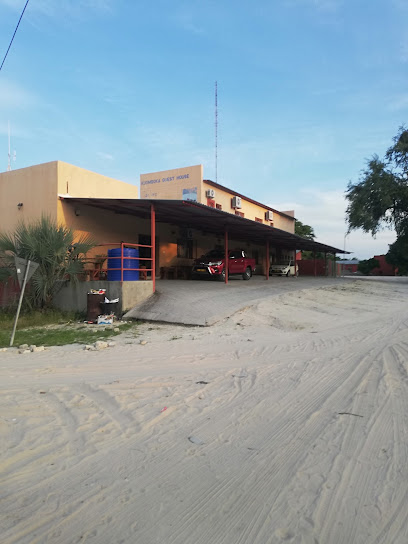
Bezi Bar & Grill
Discover the lively atmosphere at Bezi Bar & Grill in Katima Mulilo - where delicious food meets great company!
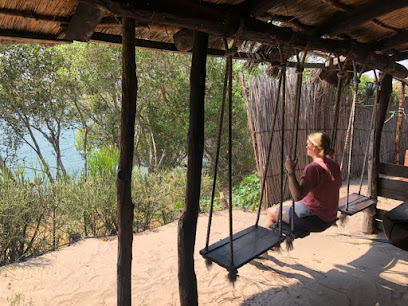
Free Heart Restaurant
Discover authentic Zambian flavors at Free Heart Restaurant in Sesheke - where culinary excellence meets local hospitality.
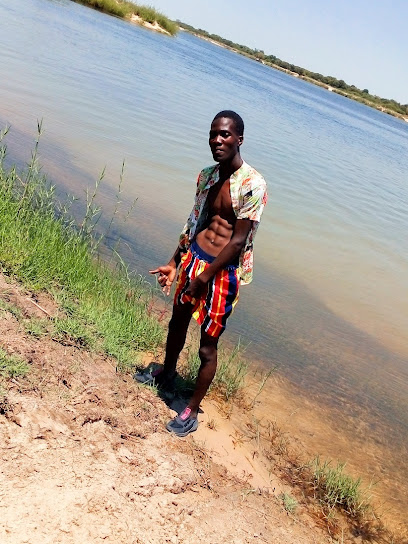
Munchos Chicken Grill Restaurant And Take Aways
Experience mouthwatering grilled chicken at Munchos Chicken Grill Restaurant and Take Aways in Katima Mulilo – where flavor meets hospitality!
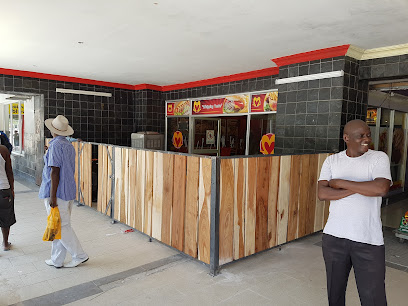
Green Basket Cafe
Discover delicious local flavors and cozy ambiance at Green Basket Cafe in Katima Mulilo - a perfect pit stop during your travels.
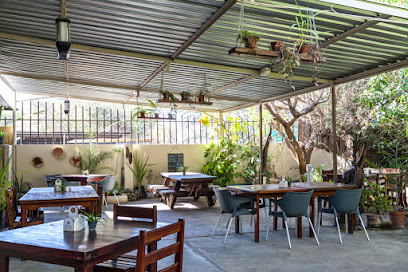
Juda Haus Lodge
Discover comfort and delicious local cuisine at Juda Haus Lodge on Namwi Island - your perfect retreat in Katima Mulilo.
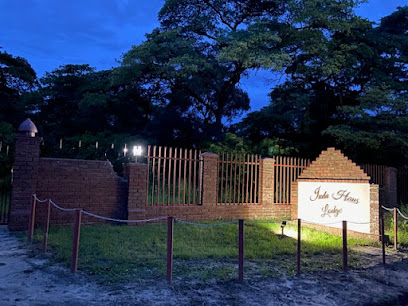
Pizza Inn / Chicken Inn
Discover delightful pizzas and savory chicken dishes at Pizza Inn / Chicken Inn in Katima Mulilo - A must-visit dining experience!

Demwalas Chicken
Experience the delicious crunch of perfectly fried chicken at Demwalas Chicken in Katima Mulilo—a true taste of local flavor.

MUMWANDA RESTAURANT
Experience authentic Zambian cuisine at Mumwanda Restaurant in Sesheke – where local flavors meet warm hospitality.
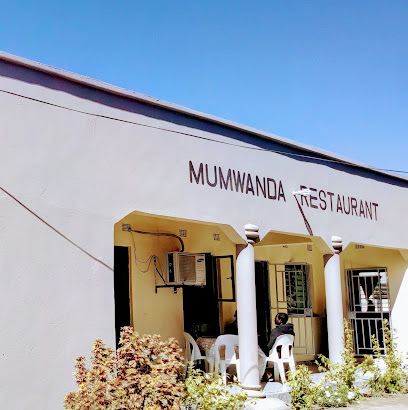
Riverside Lodge
Experience tranquility at Riverside Lodge on Namwi Island – where nature meets comfort in a unique culinary haven.

Chenai's African Restaurant
Discover authentic African cuisine at Chenai's African Restaurant in Katima Mulilo - where every dish tells a story.

Breeze Bar
Discover Breeze Bar: A vibrant grill haven in Linyanti offering delicious dishes and a welcoming atmosphere for all food enthusiasts.

Markets, malls and hidden boutiques
Shoprite Katima Mulilo
Shoprite Katima Mulilo: Your one-stop supermarket for groceries and local delights in the heart of Namibia.

Pick and Pay
Explore the vibrant offerings of Pick and Pay, the premier supermarket in Katima Mulilo, where local flavors meet convenience.
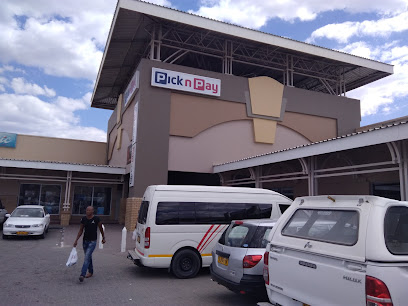
Katima Mulilo
Explore Katima Mulilo: A vibrant Namibian town where culture meets convenience and adventure awaits at every corner.
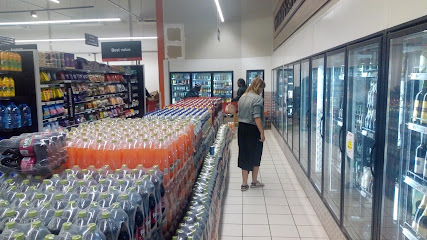
Pic N Pay Liquor
Explore Pic N Pay Liquor in Katima Mulilo for a wide selection of beverages at great prices, perfect for every occasion.
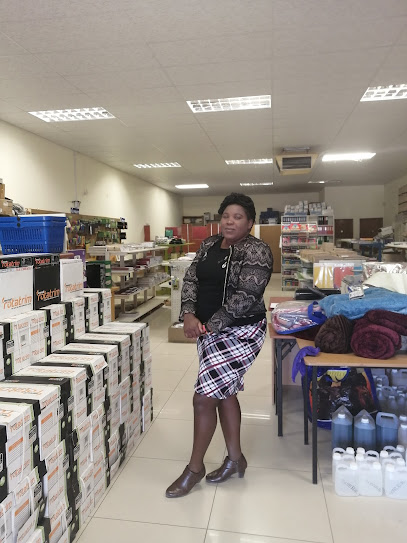
Mr Price / MRP
Explore stylish and budget-friendly fashion at Mr Price, the ultimate clothing store in Katima Mulilo for the whole family.
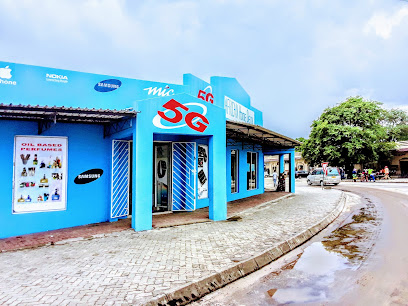
Opuwo Shop
Explore Opuwo Shop in Katima Mulilo for a unique shopping experience blending local culture with a wide range of products.

Cholos Mini Market
Discover the essence of local life at Cholos Mini Market, a charming grocery store in Katima Mulilo offering Namibian snacks and essentials.
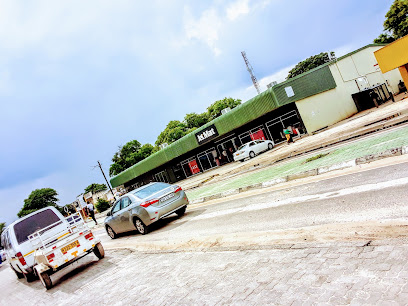
Lewis Katima Mulilo
Discover quality furniture and home goods at Lewis Katima Mulilo, the ultimate shopping destination for stylish living in Namibia.
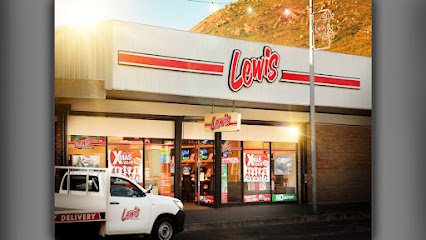
KMW
Explore KMW Home Goods Store in Katima Mulilo for unique local crafts and essential home items that showcase Namibian culture.

Dunns Katima Mulilo Shopping Centre
Explore the vibrant fashion scene at Dunns Katima Mulilo Shopping Centre, offering stylish clothing for everyone in the heart of Namibia.

Choppies supermarket katima
Explore Choppies Supermarket in Katima Mulilo for a unique shopping experience filled with local flavors and essential goods.

JH Tuck Shop
Explore local flavors and everyday essentials at JH Tuck Shop, a delightful grocery store in Katima Mulilo, Namibia.

Ackermans Katima Mulilo Shopping Centre
Explore local fashion treasures at Ackermans Katima Mulilo Shopping Centre, the ultimate shopping destination for all ages in Namibia.
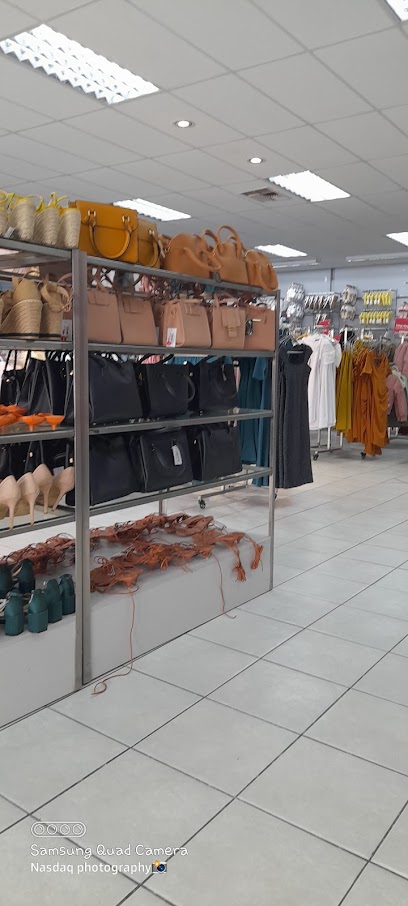
OK Furniture Katima Mulilo
Explore OK Furniture Katima Mulilo for a wide range of stylish and affordable furnishings that enhance your living spaces with a touch of Namibian charm.

Jet Katima Mulilo
Explore Jet Katima Mulilo, the premier clothing destination in Katima Mulilo, offering diverse styles and affordable prices for every shopper.

Essential bars & hidden hideouts
Ombulwa Bar
Discover the vibrant nightlife at Ombulwa Bar in Katima Mulilo, where refreshing drinks and lively local culture come together for an unforgettable experience.

Creations Bar
Experience the vibrant nightlife of Katima Mulilo at Creations Bar, where delicious drinks and a friendly atmosphere await.
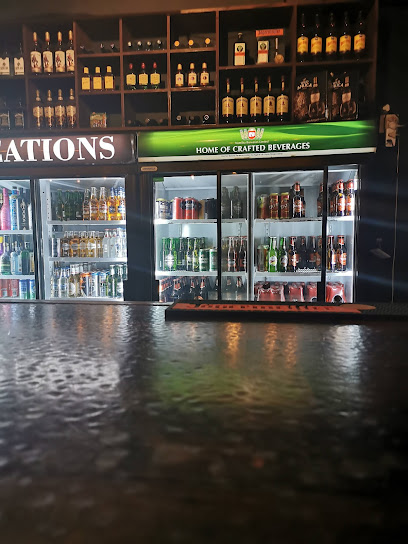
Infinity Lounge
Experience the vibrant nightlife of Katima Mulilo at Infinity Lounge, where great drinks meet lively entertainment.
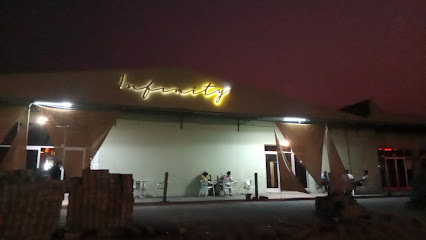
Fishers Lounge
Discover the charm of Katima Mulilo at Fishers Lounge, a cozy bar offering a delightful selection of beverages and a welcoming atmosphere.

Trace lounge Katima Mulilo
Experience the vibrant nightlife of Katima Mulilo at Trace Lounge, where friendly vibes and a diverse drink menu await every visitor.
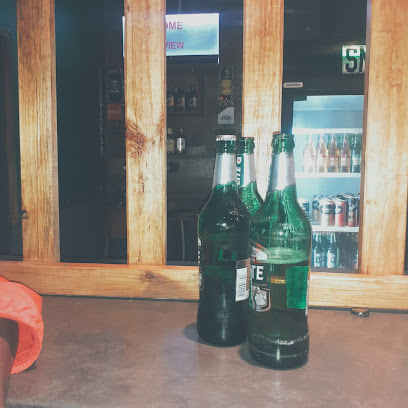
Shakala Bar
Experience the vibrant nightlife of Katima Mulilo at Shakala Bar, a local favorite for drinks, socializing, and authentic Namibian culture.
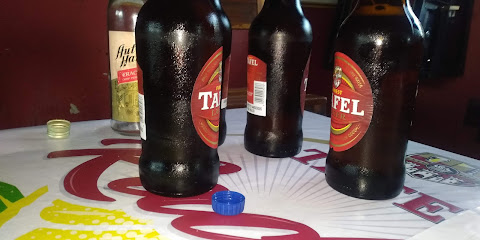
The Biz Bar
Discover the vibrant atmosphere and local flavors at The Biz Bar in Katima Mulilo, a perfect retreat for relaxation and socializing.

One Tripple Nine
Experience the vibrant nightlife of Katima Mulilo at One Tripple Nine, the go-to bar for locals and tourists alike.

Buipuso Bar
Unwind and immerse yourself in the lively culture of Katima Mulilo at Buipuso Bar, where friendly faces and refreshing drinks await.

Kalawa Jazmee Pub KM
Discover the vibrant nightlife and local culture at Kalawa Jazmee Pub in Katima Mulilo, where drinks and good vibes come together.
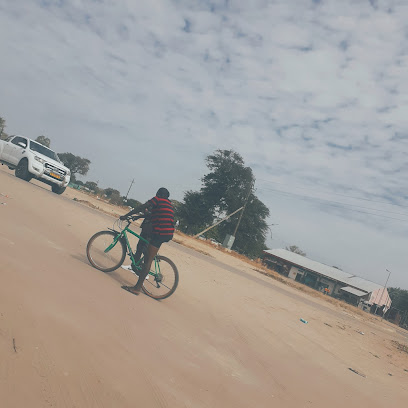
Fun House
Discover the lively energy of Fun House in Katima Mulilo, a perfect lounge for relaxation and entertainment amidst your Namibian adventure.
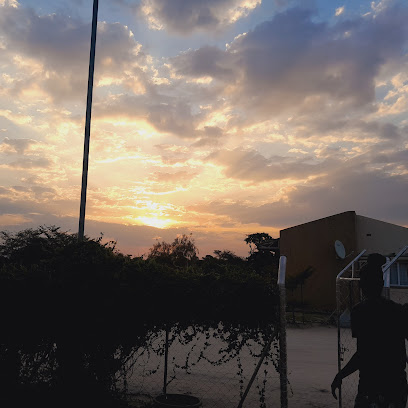
Chotto In
Discover the vibrant atmosphere of Chotto In, the premier bar in Katima Mulilo, where local culture and refreshing drinks come together.

Switch Pub
Experience the vibrant nightlife of Katima Mulilo at Switch Pub, your go-to bar for local drinks and lively entertainment.
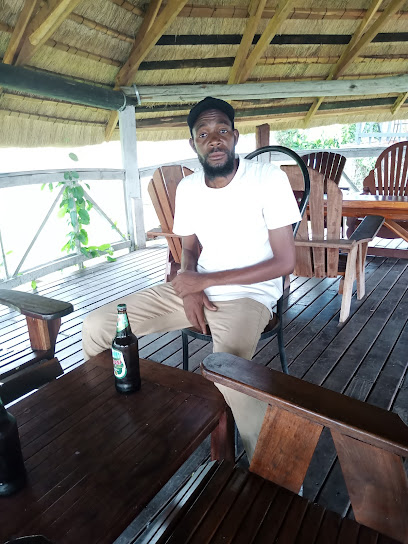
Maipato Pub
Discover the vibrant ambiance and local flavors at Maipato Pub in Katima Mulilo, your perfect spot for relaxation and entertainment.
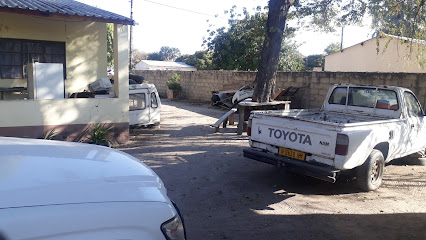
Gents Pub
Discover Gents Pub in Katima Mulilo, a lively bar offering the best of Namibian nightlife with local drinks, live music, and a vibrant atmosphere.

Local Phrases
-
- HelloMoro
[mɔrɔ] - GoodbyeTulonga
[tuːlɔŋa] - YesEhe
[ɛhɛ] - NoAwe
[awɛ] - Please/You're welcomeKaaleni
[kaːlɛni] - Thank youNdatenda
[ndatɛnda] - Excuse me/SorryTatelele
[tatɛlɛlɛ] - How are you?Ondjaba nawa?
[ɔnd͡ʒaba nawa] - Fine. And you?Ndaashi. Ondjaba?
[ndaːʃi ɔnd͡ʒaba] - Do you speak English?Uuna longa Oshingandja?
[uːna lɔŋa ɔʃiŋand͡ʒa] - I don't understandNdatayala
[ndatayala]
- HelloMoro
-
- I'd like to see the menu, pleaseNdataya kuyembelela omukanda, kaaleni
[ndatayɑ kujɛmbɛlɛla ɔmukanda, kaːlɛni] - I don't eat meatNdataya kuya liyala
[ndatayɑ kuja liyala] - Cheers!Ehangano!
[ɛhaŋano] - I would like to pay, pleaseNdataya kutuulwa, kaaleni
[ndatayɑ kutuːlwa, kaːlɛni]
- I'd like to see the menu, pleaseNdataya kuyembelela omukanda, kaaleni
-
- Help!Nau!
[nau] - Go away!Tata!
[tatɑ] - Call the Police!Tola Ombepo!
[tɔla ɔmbɛpɔ] - Call a doctor!Tola onganga!
[tɔla ɔŋanga] - I'm lostNdahaya
[ndahayɑ] - I'm illNdataya kuya
[ndatayɑ kuja]
- Help!Nau!
-
- I'd like to buy...Ndataya kutya...
[ndatayɑ kutja] - I'm just lookingNdataya ku lombola
[ndatayɑ ku lɔmbɔla] - How much is it?Omwaha oyi?
[ɔmwaha ɔyi] - That's too expensiveHai, oshi li aalula
[hai, ɔʃi li aːlula] - Can you lower the price?Uupale oshi tulelo?
[uːpalɛ ɔʃi tulɛlɔ]
- I'd like to buy...Ndataya kutya...
-
- What time is it?Omwaha gwi?
[ɔmwaha gwi] - It's one o'clockOmwaha oyi naa
[ɔmwaha ɔyi naː] - Half past (10)Omwaha oyi kona (10)
[ɔmwaha ɔyi kɔna (10)] - MorningOshikwembu
[ɔʃikwɛmbu] - AfternoonOmbanda
[ɔmbanda] - EveningOmandi
[ɔmandi] - YesterdayOndala
[ɔndala] - TodayOmwedi
[ɔmwɛdi] - TomorrowOmwala
[ɔmwala] - 1Mo
[mɔ] - 2Zo
[zɔ] - 3Kuza
[kuzɑ] - 4Kune
[kunɛ] - 5Tano
[tanɔ] - 6Miti
[miti] - 7Nzhe
[nzhe] - 8Nzwe
[nzwe] - 9Kenda
[kɛnda] - 10Kumwe
[kumwɛ]
- What time is it?Omwaha gwi?
-
- Where's a/the...?Uupi...?
[uːpi] - What's the address?Ondjala wa?
[ɔnd͡ʒala wa] - Can you show me (on the map)?Uupale onkalo (omapulango)?
[uːpalɛ ɔŋkalo (ɔmapulango)] - When's the next (bus)?Omwaha gwi (omakuka)?
[ɔmwaha gwi (ɔmakuka)] - A ticket (to ....)Iitike (kwa....)
[iːtikɛ (kwa....)]
- Where's a/the...?Uupi...?
History of Katima Mulilo
-
Katima Mulilo, located on the banks of the Zambezi River, has been inhabited for centuries by indigenous tribes such as the Lozi, Subia, and Totela. These tribes were drawn to the fertile lands and abundant water sources, which provided ample opportunities for agriculture and fishing.
-
In the late 19th century, Katima Mulilo became a focal point during the colonial scramble for Africa. The area was part of the Caprivi Strip, named after German Chancellor Leo von Caprivi. The Germans sought control over this region to secure a route to the Indian Ocean. This period saw the establishment of forts and trading posts by both German and British forces.
-
During World War I, the Caprivi Strip, including Katima Mulilo, was a strategic location. South African forces, under the British Empire, took control of the area from the Germans. This shift in power significantly impacted the local tribes, altering their way of life and governance.
-
Namibia gained independence from South African rule in 1990, and Katima Mulilo became an important administrative center in the newly independent nation. The town witnessed significant infrastructural development, including the construction of schools, hospitals, and roads, aimed at improving the quality of life for its residents.
-
Katima Mulilo is a melting pot of various ethnic groups, each contributing to the rich cultural tapestry of the town. Traditional ceremonies, such as the Lozi's annual Kuomboka festival, are celebrated with much fervor. Handicrafts, music, and dance play a vital role in preserving the cultural heritage of the region.
-
The town's economy has evolved over the years, transitioning from subsistence agriculture and fishing to a more diverse economy. Tourism, driven by the town's proximity to natural attractions like the Zambezi River and nearby national parks, has become a significant contributor to local income. Additionally, cross-border trade with neighboring Zambia has boosted economic activities in the region.
-
Katima Mulilo is situated in a region rich in biodiversity. Efforts have been made to conserve the natural environment, including initiatives to protect the Zambezi River's ecosystem and the surrounding wildlife. Community-based conservation projects aim to involve local residents in sustainable practices, ensuring the preservation of their natural heritage for future generations.
-
Today, Katima Mulilo is a vibrant town that blends traditional and modern elements. It serves as a gateway to the Caprivi Strip and is known for its welcoming atmosphere, scenic beauty, and cultural richness. The town continues to grow, balancing development with the preservation of its unique history and cultural identity.
Katima Mulilo Essentials
-
Katima Mulilo is located in the northeastern part of Namibia, near the Zambezi River. The nearest international airport is Harry Mwanga Nkumbula International Airport in Livingstone, Zambia, which is approximately 130 kilometers away. From Livingstone, you can take a taxi or arrange for a shuttle service to Katima Mulilo. Alternatively, you can fly into Hosea Kutako International Airport in Windhoek, Namibia's capital, and then take a domestic flight to Mpacha Airport, located about 18 kilometers from Katima Mulilo.
-
Once in Katima Mulilo, you can get around using local taxis, which are readily available and relatively inexpensive. There are also car rental services if you prefer the flexibility of driving yourself. Public transportation options are limited, so taxis or rental cars are the most convenient methods for getting around. Many of the town's attractions are within walking distance, making it easy to explore on foot.
-
The official currency in Namibia is the Namibian Dollar (NAD), which is pegged to the South African Rand (ZAR). Credit cards are accepted in most hotels, restaurants, and shops, but it's advisable to carry some cash for smaller establishments and local markets. ATMs are available in Katima Mulilo, so you can easily withdraw cash if needed.
-
Katima Mulilo is generally a safe destination for tourists, but it's wise to take standard precautions. Avoid walking alone at night in unfamiliar areas and keep your belongings secure in crowded places. Some areas with higher crime rates include the informal settlements on the outskirts of the town. Always be vigilant and aware of your surroundings to ensure a safe and enjoyable visit.
-
In case of emergency, dial 112 or 10111 for immediate assistance. There is a local police station and medical facilities in Katima Mulilo. It is highly recommended to have travel insurance that covers medical emergencies. For minor health issues, there are several pharmacies in town where you can purchase over-the-counter medications.
-
Fashion: Do dress modestly, especially when visiting local communities. Avoid wearing very revealing clothing. Religion: Do respect local customs and religious practices, particularly in rural areas. Public Transport: Do be courteous and respectful to taxi drivers and other passengers. Don't expect public transport to be as punctual or organized as in major cities. Greetings: Do greet people with a friendly handshake or a nod. It's polite to address elders with respect. Eating & Drinking: Do try local dishes and be open to new culinary experiences. Don’t refuse food offered by locals, as it may be considered impolite.
-
To experience Katima Mulilo like a local, visit the open-air markets where you can buy fresh produce, crafts, and traditional goods. Engage with the locals, who are often friendly and willing to share their stories and culture. Don’t miss the opportunity to take a boat trip on the Zambezi River or visit the nearby national parks for a chance to see wildlife. For a unique cultural experience, attend a traditional dance performance or a local festival.
Trending Landmark in Katima Mulilo
-
Shoprite Katima Mulilo
-
Passione Restaurant
-
Protea Hotel Zambezi River Lodge
-
TotalEnergies Kamunu Service Station
-
Caprivi Houseboat Safari Lodge
-
Geoline B&B
-
Katima Mulilo Town Council Guest House
-
3 Palms B&B
-
Kololo Guesthouse
-
Creations Bar
-
Caprivi Adventures
-
Chotto Market
-
Ngweze South S.D.A Church
-
Namwi Island Lodge
-
Mukwahepo Lounge
Nearby Cities to Katima Mulilo
-
Things To Do in Kasane
-
Things To Do in Livingstone
-
Things To Do in Victoria Falls
-
Things To Do in Hwange
-
Things To Do in Maun
-
Things To Do in Rundu
-
Things To Do in Lusaka
-
Things To Do in Kariba
-
Things To Do in Francistown
-
Things To Do in Kabwe
-
Things To Do in Serowe
-
Things To Do in Selebi-Phikwe
-
Things To Do in Gweru
-
Things To Do in Chinhoyi
-
Things To Do in Palapye








